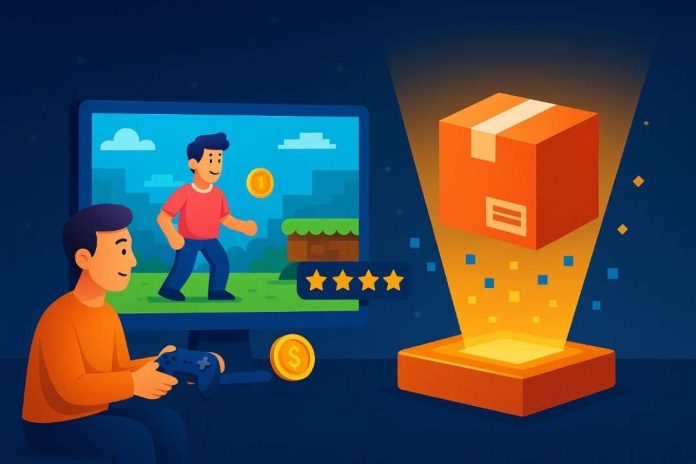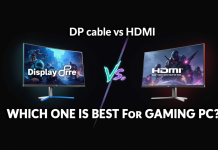The connection between physical products and digital ecosystems has become one of the most notable shifts in gaming technology. What once required isolated systems or manual redemption now happens instantly through cloud-based authentication and unified identity platforms. Modern titles such as Call of Duty: Black Ops 7 show how real-world items can unlock digital rewards through secure, automated pipelines that scale globally.
Table of contents
- The Evolution of Physical-to-Digital Integration
- How the Redemption System Works Behind the Scenes
- Identity Systems as the Core of Digital Reward Delivery
- A Case Example Using Monster Energy Technology
- Scaling Real-World Promotions Across Regions
- Security Infrastructure That Protects Users
- Why These Integrations Matter in the Tech Sector
- Cross-Platform Synchronization and User Experience
- The Larger Perspective on Tech Innovation
- Conclusion
The Evolution of Physical-to-Digital Integration
Across the tech industry, consumer behavior is shifting toward seamless interaction. Whether buying a beverage, scanning packaging, or activating a loyalty code, users expect immediate results. This expectation has driven the rise of real-world product integrations in gaming.
These integrations are not only marketing tools but also demonstrations of advanced technology. They merge retail systems, cloud verification, user identity frameworks, and instant digital asset delivery into one streamlined experience. The result is a highly responsive funnel where a physical purchase becomes a digital reward in seconds.
How the Redemption System Works Behind the Scenes
Although the user sees a simple process, the backend involves several interconnected technologies working in real time.
Key components of the workflow
- Unique codes generated at packaging
- QR and alphanumeric recognition
- Region-aware validation checks
- Secure authentication through web portals
- Token issuance for game platforms
- Cloud-driven delivery to user profiles
This architecture allows millions of redemptions without performance issues or data conflicts.
Identity Systems as the Core of Digital Reward Delivery
Modern gaming ecosystems rely on centralized identity profiles that connect all user devices. When an item is redeemed, the reward does not attach to a console or specific device. Instead, it binds to the player’s unified identity, allowing immediate access across platforms.
Benefits of identity-based reward systems
- Device independence
- Reduced duplication or misuse
- Accurate player tracking
- Higher security
- Instant synchronization
This principle makes product-based activations feel effortless for users.
A Case Example Using Monster Energy Technology
Among the most recognized real-world integrations in Black Ops 7 is the system connected to Monster Energy product codes. Although players often focus on the cosmetic items in their inventory, the more interesting element is the technology that powers this interaction.
Once a code is entered, the backend identifies authenticity, assigns it to the correct player profile, and delivers the reward through automated processes. For users exploring how reward systems are cataloged across different items, the BO7 Monster Energy unlock overview provides a structured example of how digital assets are organized into the broader gaming ecosystem.
This model reflects how advanced cloud systems support modern reward delivery without manual syncing.
Scaling Real-World Promotions Across Regions
One of the greatest strengths of today’s advanced redemption technology is its ability to operate and scale seamlessly across international markets. Whether a promotion is launched in Europe, North America, Asia, or any other region, the same centralized backend system efficiently manages all submissions while automatically applying region-specific rules, legal requirements, languages, and eligibility conditions to ensure smooth and compliant global participation.
What enables global scalability
- Modular backend architecture
- Reusable promotional templates
- Accurate regional filters
- Centralized digital asset storage
- Multilingual redemption portals
This enables publishers to launch multiple product-driven integrations quickly while maintaining technical consistency.
Security Infrastructure That Protects Users

Security plays a critical role in maintaining the integrity and reliability of modern redemption systems. Every code submission undergoes multiple verification layers, ensuring only legitimate entries are processed. These safeguards protect user accounts, block unauthorized access, detect suspicious patterns in real time, and prevent fraudulent activity such as reused codes, automated submissions, or manipulated reward claims. Together, these measures help brands maintain trust and ensure fair participation for all users.
Standard security measures in redemption systems
- Detection of reused or auto-generated codes
- Rate-limit protection
- Encrypted communication with servers
- One-time token assignment
- Identity-based tracking
These systems keep the ecosystem stable even during high-volume participation.
Why These Integrations Matter in the Tech Sector
The rise of physical-to-digital reward systems is more than a gaming trend. It demonstrates how cloud infrastructure, authentication technology, and data analytics are transforming consumer experiences across industries.
The broader ecosystem of digital reward documentation, such as the cataloged game data on Mitchcactus, shows how centralized platforms help users understand multi-game reward systems, track item availability, and explore digital personalization across various titles. This mirrors how larger tech companies manage identity, data layers, and cross-platform delivery in enterprise environments.
Cross-Platform Synchronization and User Experience
One of the most impressive aspects of these systems is how seamlessly rewards appear across all devices. Once validated, the reward becomes part of the player’s library, regardless of the platform.
Why synchronization elevates the experience
- No manual refresh needed
- Reduced risk of errors
- Consistent visibility across platforms
- Immediate confirmation for the user
- Enhanced ease of use
This uniformity makes product-linked digital rewards feel dependable and user-friendly.
The Larger Perspective on Tech Innovation
Real-world product integrations highlight how consumer technology is evolving. The same principles that drive these systems are found in loyalty programs, connected retail platforms, innovative packaging, cross-app ecosystems, and cloud identity frameworks.
They illustrate how offline and online experiences can merge into a single technology funnel powered by secure validation, cloud distribution, and unified user identity.
Conclusion
The integration of real-world items with digital reward systems represents a significant advancement in gaming technology. Through secure identity frameworks, cloud infrastructure, and automated verification systems, a simple purchase becomes a personalized digital experience. These systems serve as a model for how physical products and digital ecosystems will continue to merge across tech industries in the coming years.











